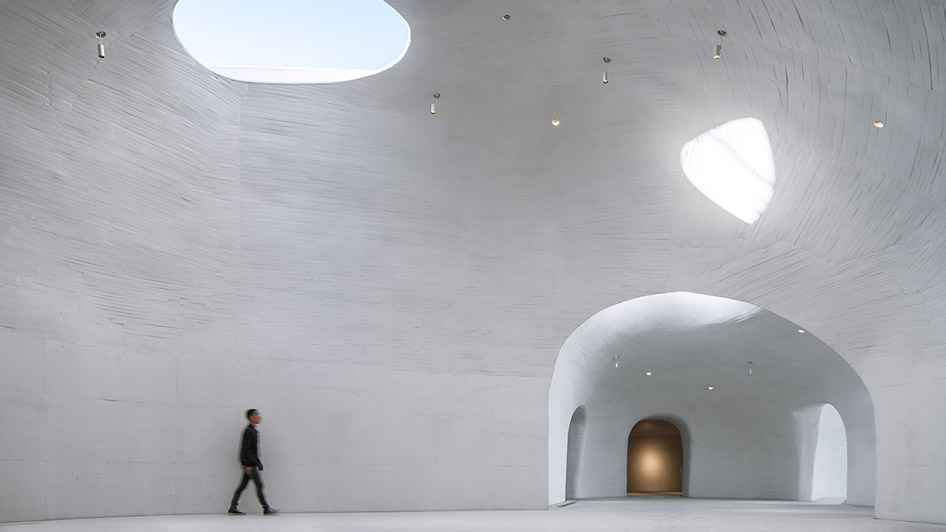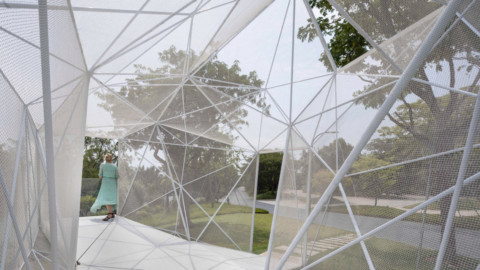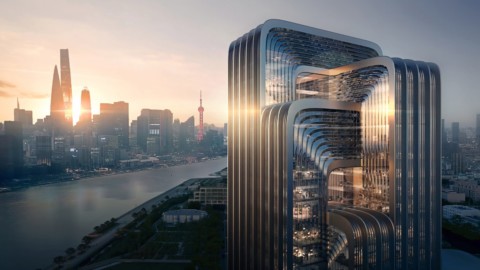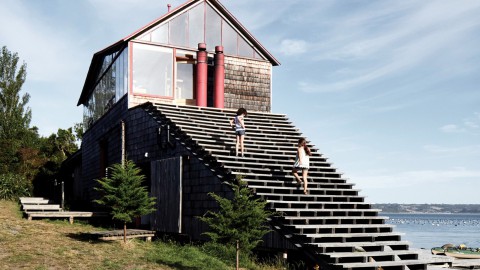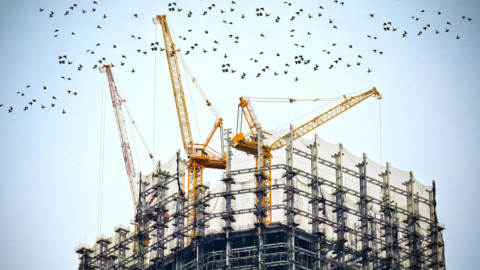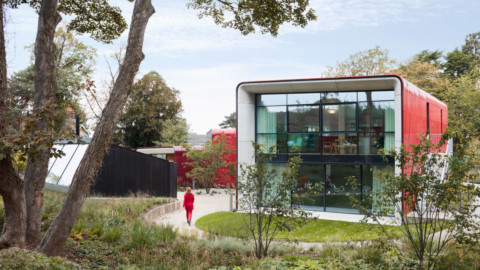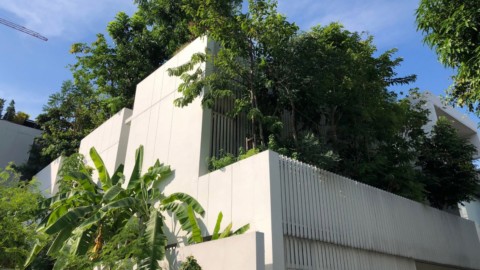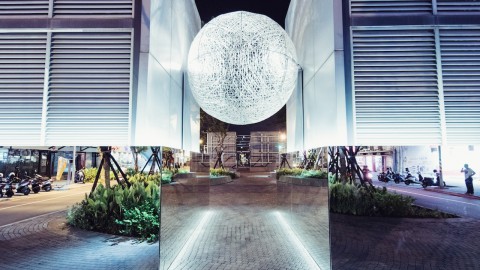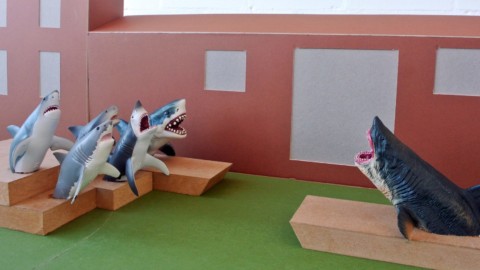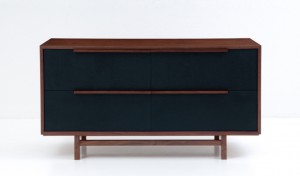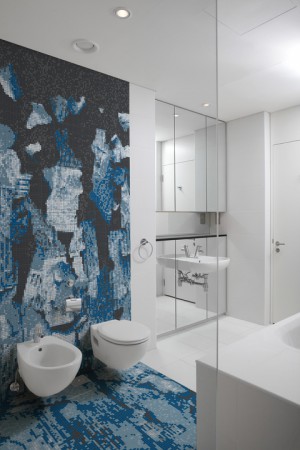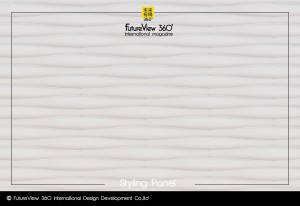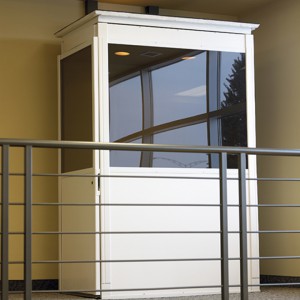A network of subterranean concrete galleries forms the UCCA Dune Art Museum, which Beijing-based Open Architecture has completed in Qinhuangdao, China.
The building, which took three years to complete, is carved into a dune on a beach in the coastal city in northeast China.
地下混凝土畫廊網絡構成了UCCA沙丘美術館,總部位於北京的開放式建築已在中國秦皇島建成。
該建築耗時三年完成,在中國東北沿海城市的海灘上被刻成沙丘。
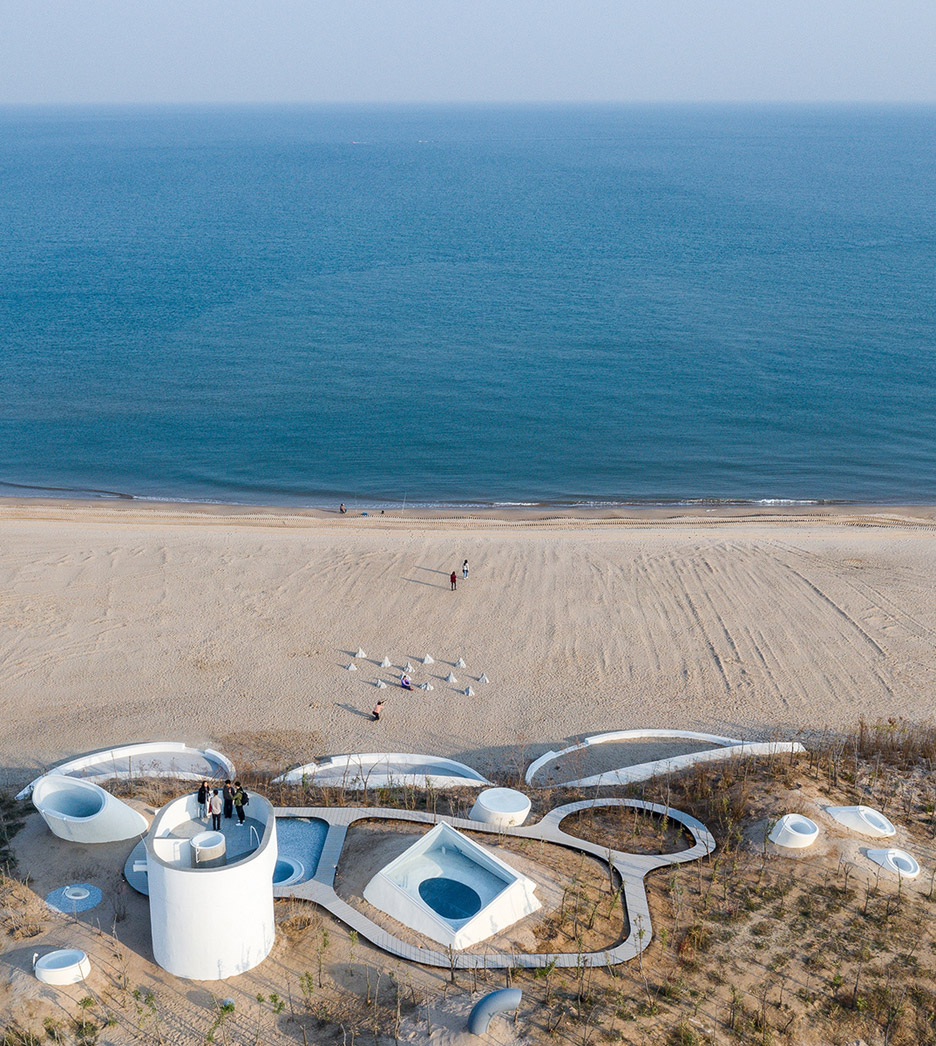
Its experimental design is emblematic of the current mood in the country, according to Open Architecture co-founder Li Hu.
“I feel like this whole country is the experiment,” he told. “Many things are changing and life has changed super fast and yet we still live in the cities that we inherited.”
“The architecture, the very concept of architecture, the city, it’s all changing,” he continued.
“Now, one of the advantages we have in China is that we have the chance to build a new architecture – to start from scratch.”
Open Architecture聯合創始人Li Hu表示,其實驗設計象徵著該國目前的心情。
他說:“我覺得這是整個國家的試驗。” “許多事情正在發生變化,生活已經發生了快速變化,但我們仍然生活在我們繼承的城市中。”
他繼續說:“建築,建築的概念,城市,都在發生變化。”
“現在,我們在中國擁有的優勢之一是,我們有機會從頭開始構建新的架構。”
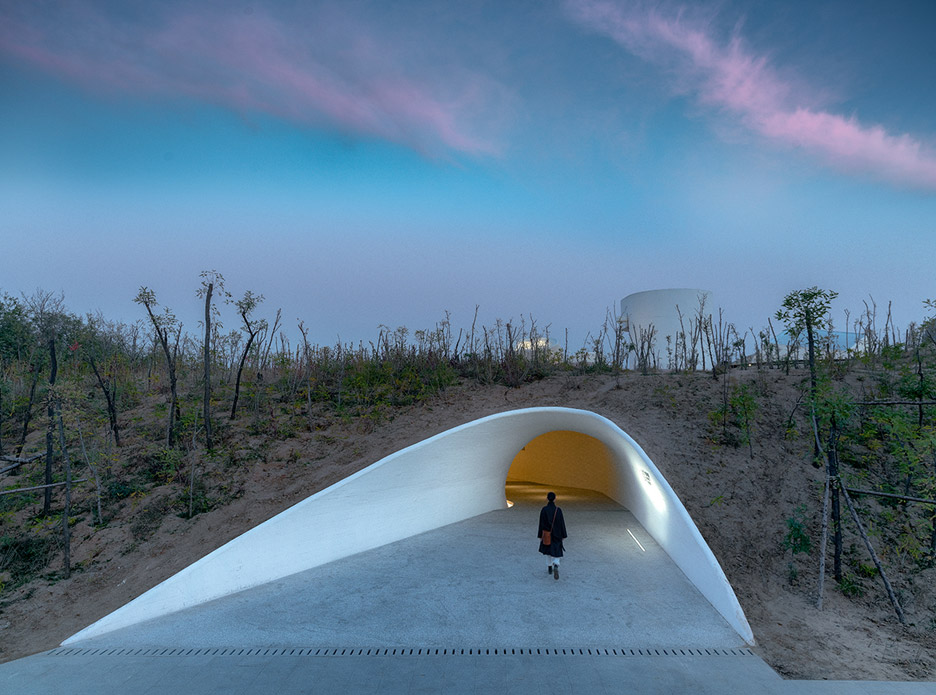
Ten galleries and a cafe are interlinked beneath the sand. The interconnected, organically-shaped spaces echo those of caves, the earliest form of human refuge and a form that inspired the narrative behind the museum.
“The walls of ancient caves were where art was first practiced,” Li Hu explained.
十個畫廊和一個咖啡館在沙子下面相互連接。 相互聯繫的有機形狀的空間呼應著洞穴的形狀,這是人類避難所的最早形式,並且激發了博物館背後的敘事形式。
李虎解釋說:“古代洞穴的牆壁是最早進行藝術創作的地方。”
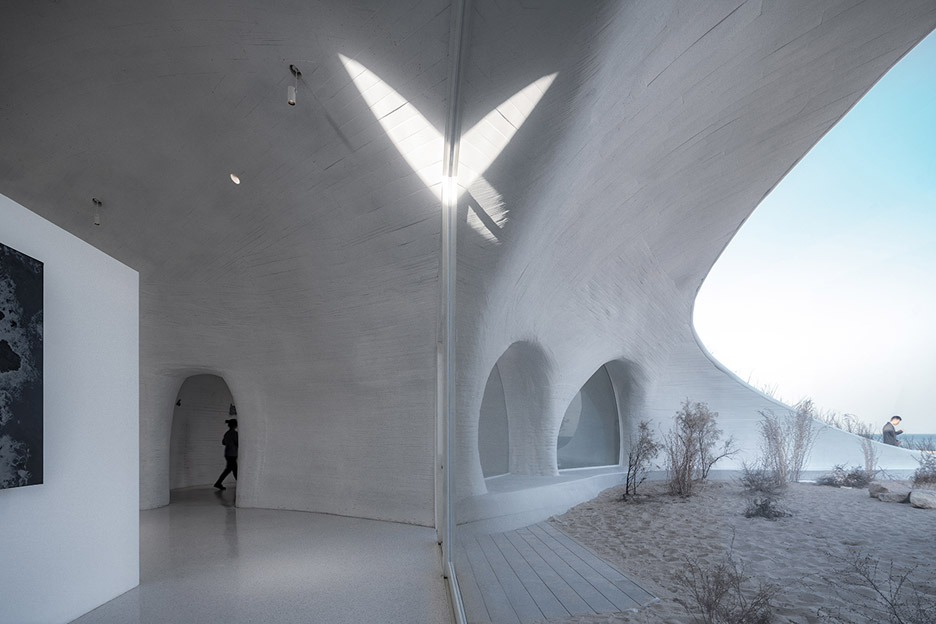
Local workers from Qinhangdao used strips of wood to hand shape the concrete shell. The architects chose to leave the irregular texture of the formwork, so these traces of the manual construction can be read across the walls.
Openings throughout the building frame different views of the sea and the sky, which can be seen changing throughout the day and allow natural light into the museum’s spaces.
秦杭島的當地工人用木頭條手工塑造混凝土外殼。 建築師選擇保留模板的不規則紋理,以便可以在牆上讀取這些手工構造的痕跡。
整個建築的開口構成了海洋和天空的不同景觀,可以看到全天變化,並允許自然光進入博物館的空間。
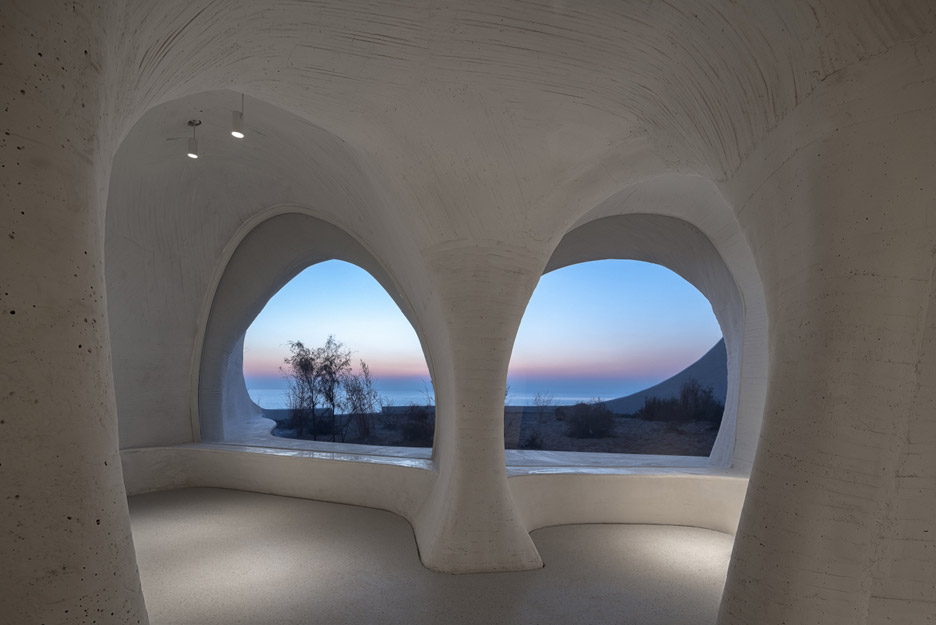
Open Architecture designed the UCCA Dune Art Museum out of a desire to save the natural ecology of the site
The delicate ecosystem of the dune took thousands of years to form, yet the client had planned to destroy it to clear space for the museum. Thanks to the museum’s presence, the landscape will be preserved.
開放式建築的設計是出於保存場地自然生態的渴望
沙丘精緻的生態系統花了數千年的時間形成,但客戶曾計劃摧毀它以為博物館騰出空間。 由於博物館的存在,景觀得以保留。
“If we didn’t build a museum inside the dune, the dune would be gone today. Wiped out like everywhere else, because why have a dune if it’s blocking the view?” said Li Hu.
“If there is an integrated museum, then the dune is saved.”
“如果我們不在沙丘內建造博物館,那麼沙丘將在今天消失。像其他地方一樣被擦掉,因為為什麼沙丘會擋住視線?” 李虎說。
“如果有一個綜合博物館,那麼沙丘就得救了。”
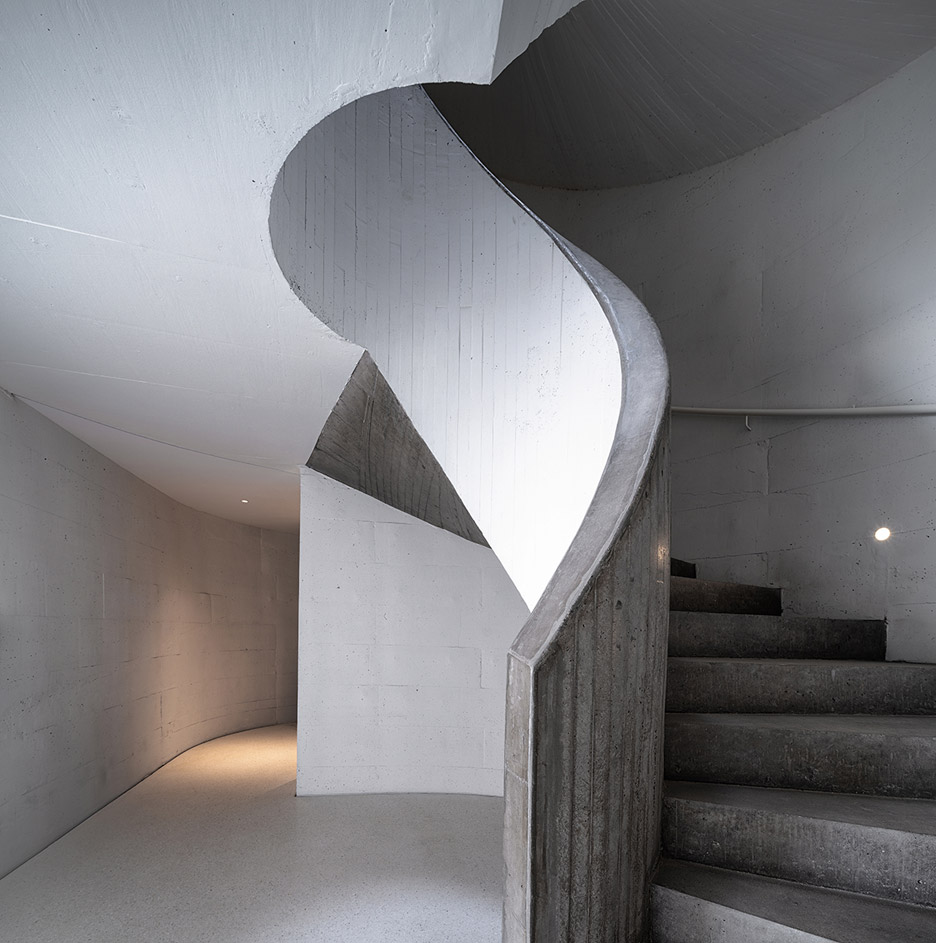
Sustainability was also key to the museum project.
The building boasts a sand-covered roof that helps to keep the interior cool in the summer. There is also a low-energy, zero-emissions ground-source heat pump system, instead of air conditioning.
可持續性也是博物館項目的關鍵。
該建築物的屋頂為沙土覆蓋,有助於在夏季保持室內涼爽。 還有一個低能耗,零排放的地源熱泵系統,代替了空調。
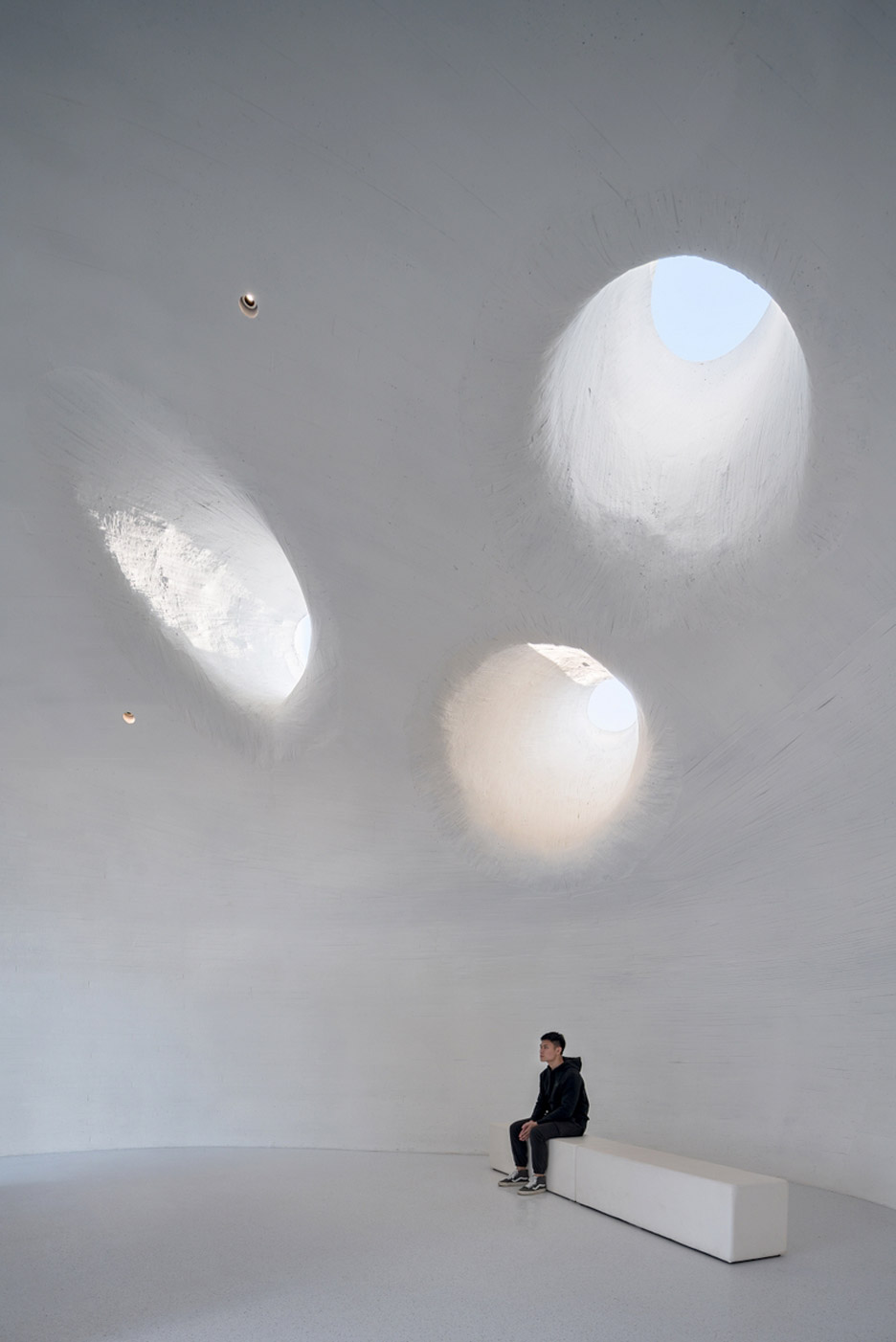
On the same site as the UCCA Dune Art Museum, Open Architecture plans to construct an art gallery a short distance out to sea that faces the water. This gallery will also serve as a space for residencies and provide the visiting artist with a small home-cum-studio that is only accessible by boat or at low tide.
The museum is operated by the UCCA, one of China’s leading independent art institutions. The inaugural exhibition, After Nature, Opened to the public in October 2018.
在與UCCA沙丘美術館相同的地點,開放式建築計劃在離大海不遠的面向水的地方建造一個美術館。 該畫廊還將作為住所的空間,並為來訪的藝術家提供一個小型家庭兼工作室,只能乘船或在退潮時進入。
該博物館由中國領先的獨立藝術機構之一UCCA經營。 首屆展覽《大自然之後》於2018年10月向公眾開放。
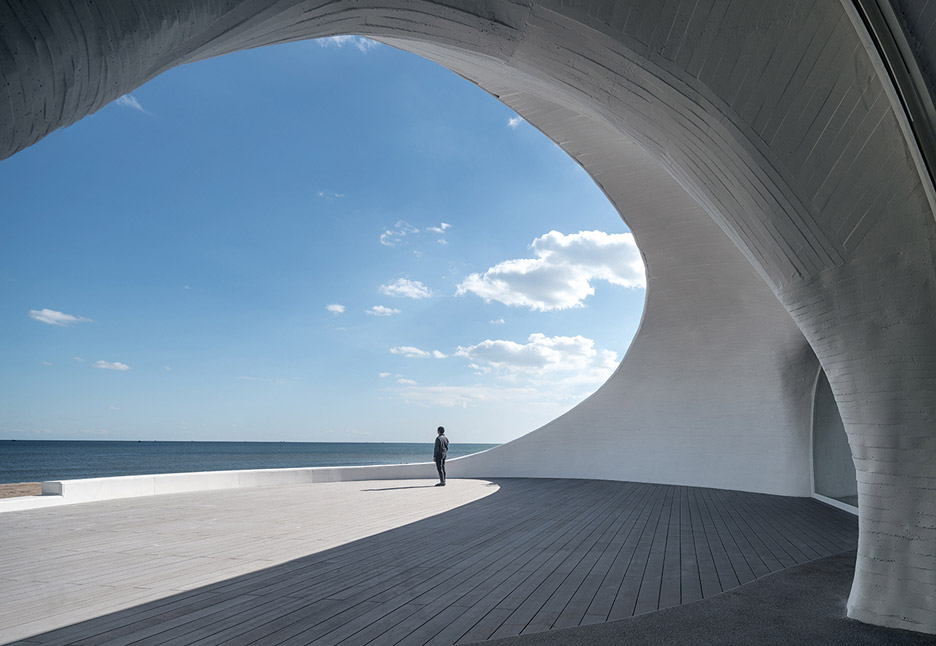
Open Architecture was founded by Li Hu and Huang Wenjing in New York. The Beijing office was established in 2008.
The studio focuses on the power of architecture to transform the way people live, and aims to strike a new balance between man and nature.
The practice recently launched its Mars Case as part of the China House Vision exhibition in at the Bird’s Nest Stadium in Beijing. The prototype imagines that humans might be forced to settle on Mars, where they cannot rely on natural resources and must live in a self-contained pod that can constantly recycle air, water and energy.
開放式建築由李虎和黃文靜在紐約創立。 北京辦事處成立於2008年。
該工作室專注於建築改變人們生活方式的力量,並力求在人與自然之間取得新的平衡。
這種做法最近在北京鳥巢體育館舉行的“中國眾議院展望”展覽中推出了“火星案”。 該原型設想,人類可能被迫定居在火星上,在那裡他們不能依靠自然資源,必須生活在一個可以不斷循環利用空氣,水和能源的獨立的吊艙中。
Project credits:
Architects: Open Architecture
Principals in charge: Li Hu, Huang Wenjing
Project team: Zhou Tingting (Project Architect), Wang Mengmeng, Hu Boji, Fang Kuanyin, Joshua Parker, Lu Di, Lin Bihong, Ye Qing, Steven Shi, Jia Han
Local design institute: CABR Technology
Lighting design: X Studio, School of Architecture, Tsinghua University, China + Open Architecture
項目學分:
建築師:開放式架構
負責人:李虎,黃文靜
項目團隊:周婷婷(項目建築師),王夢萌,胡伯吉,方寬銀,約書亞·帕克,盧迪,林必宏,葉青,史蒂文,賈漢
本地設計院:CABR Technology
燈光設計:中國清華大學建築學院X工作室+開放式建築
FROM:https://www.dezeen.com/2018/12/12/open-architecture-ucc-dune-art-museum-architecture-china/

